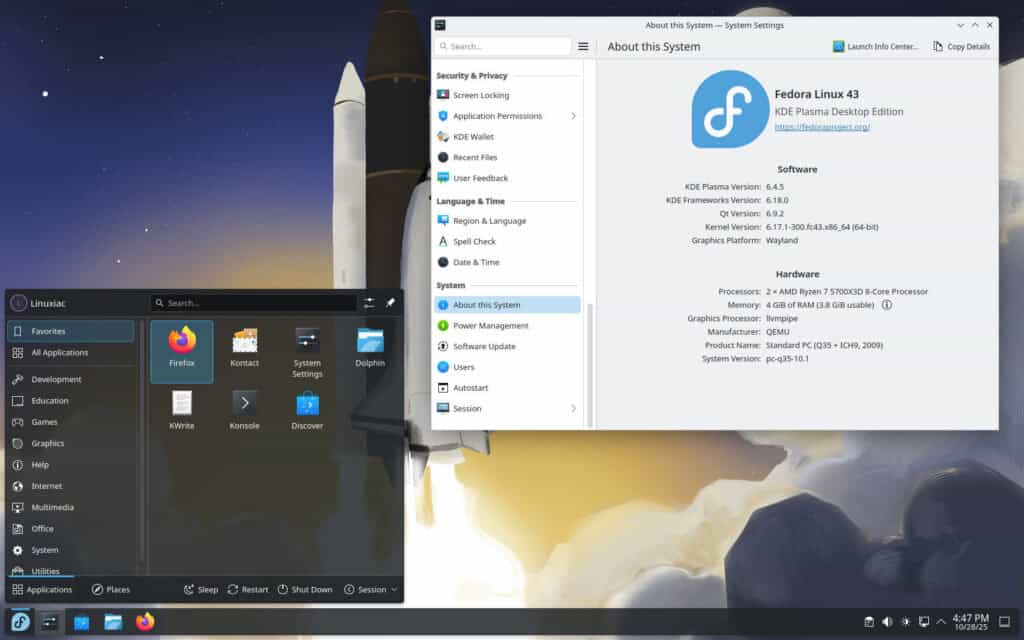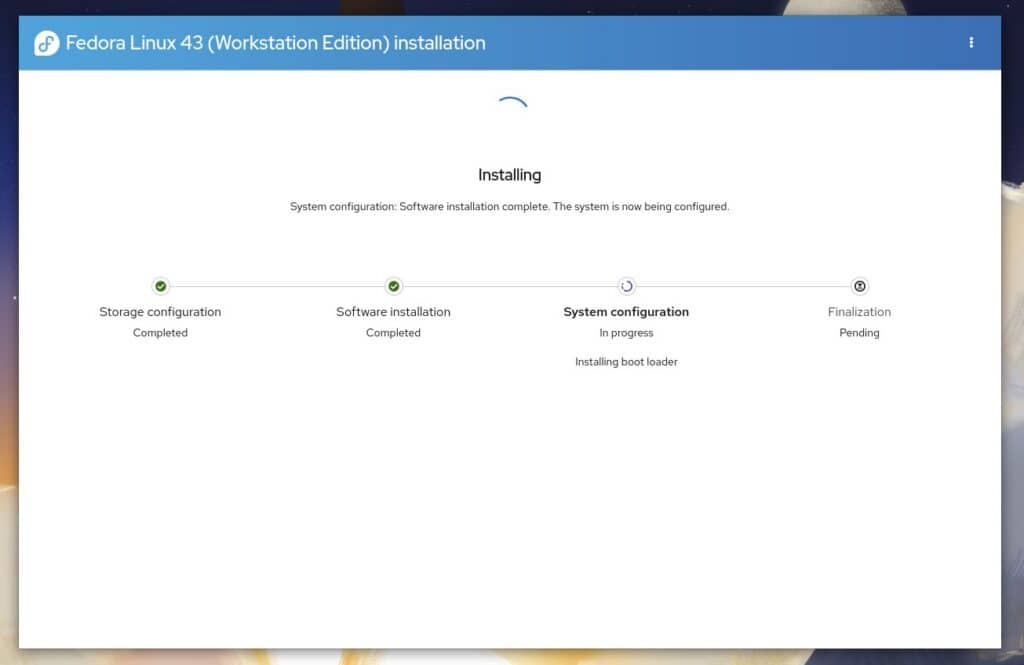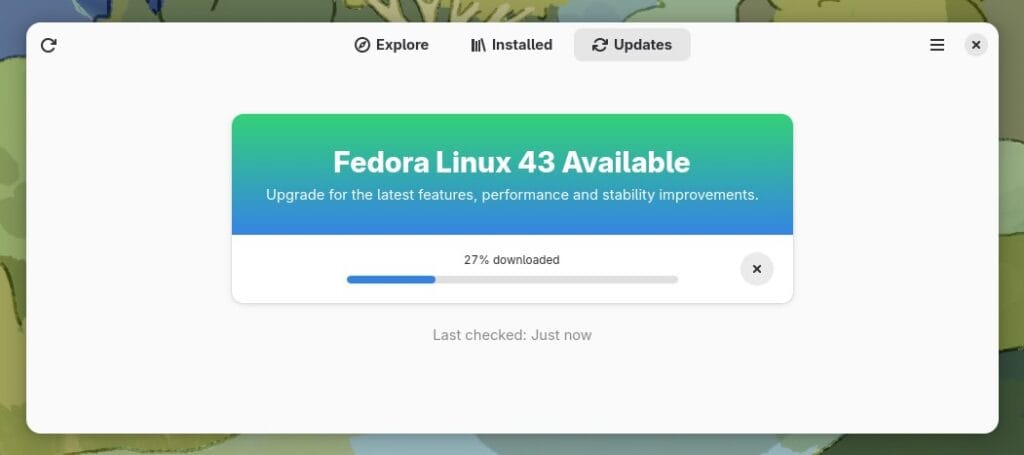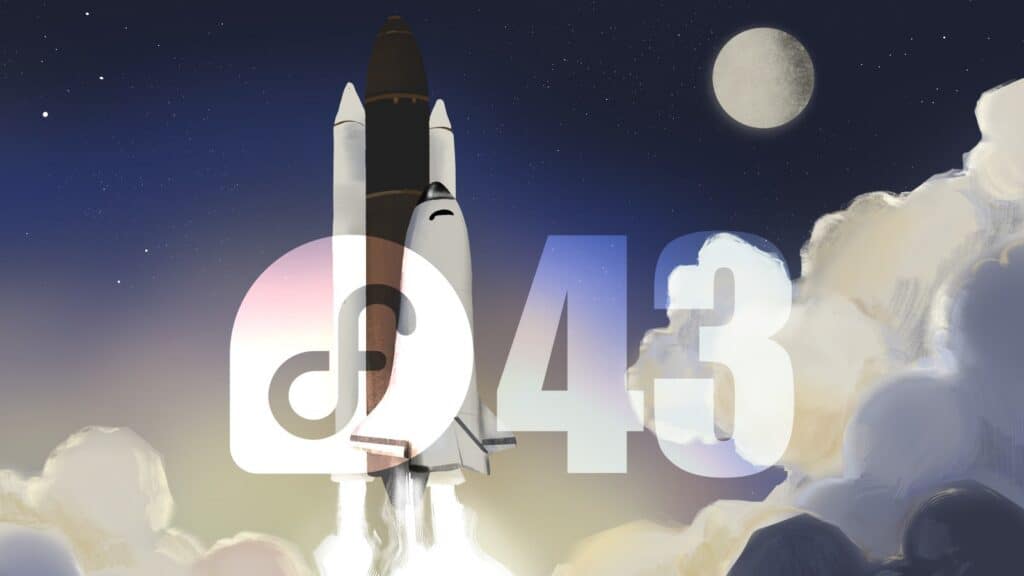Another six-month cycle has passed, and the highly anticipated Fedora 43 release is finally here, now available for download, powered by the latest and greatest Linux kernel 6.17.
One of the biggest changes in Fedora Workstation 43 is that it’s now Wayland-only. The legacy GNOME X11 packages have been removed from the repositories, completing a transition that began nearly a decade ago.
Wayland has been the default session for several releases, but Fedora 43 makes it official — X11 is gone. Users can expect smoother animations, cleaner rendering, and reduced screen tearing thanks to triple buffering, along with better hardware compatibility for systems using Intel Xe graphics, NVIDIA Optimus, and Hybrid Mode configurations.
Another subtle but important visual enhancement comes from switching to the COLRv1 Noto Color Emoji fonts. Unlike traditional bitmap fonts, the new color vector format scales smoothly at any size, ensuring consistent, crisp emoji rendering across display resolutions.
The distro ships with GNOME 49 as its default desktop, plus we can’t fail to mention that Fedora 43 now includes Peas 2.0, the latest version of GNOME’s plugin engine used by many core applications.

As Fedora’s other flagship edition, the KDE one, comes with Plasma 6.4.5, accompanied by Frameworks 6.8 and KDE Gear 25.08.2 app collection, inheriting the improvements introduced in the major Plasma 6.4 release. Among the most notable improvements:
- New App Launcher hints — freshly installed apps are tagged with a green New! label for easy discovery.
- Flexible tiling layouts — users can now assign unique tile layouts to each virtual desktop.
- Redesigned Spectacle — KDE’s screenshot utility has been completely overhauled with a new, streamlined interface.
- Color management and HDR calibration — the Display & Monitor settings now include an HDR wizard for fine-tuning brightness and color accuracy.
- Accessibility upgrades — move the pointer using the numeric keypad or zoom using a three-finger touchpad gesture.
- Smarter notifications — when an app enters full-screen mode, Plasma automatically enables Do Not Disturb and summarizes missed notifications afterward.

Fedora KDE users will also notice system-level improvements beyond the desktop environment. The distribution now ships with the new Anaconda WebUI installer, providing a sleek, modern look and a smoother installation experience.
Under the hood, Fedora 43 updates its GNU Toolchain to GCC 15.2, binutils 2.45, glibc 2.42, and GDB 17.1. The new RPM 6.0 brings improved signature verification, tighter integrity checks, and refined performance when handling large package repositories. Developers will also benefit from LLVM 21, Golang 1.25, and Perl 5.42
Moreover, Fedora’s Anaconda installer now uses DNF5 as the package management backend during installation, replacing the aging DNF4. DNF5 is faster, cleaner, and more modular—helping speed up installations and simplify dependency resolution. Meanwhile, Anaconda WebUI, Fedora’s browser-based installer, becomes the default for most Fedora Spins.

On the software side, Fedora 43 comes packed with updated stacks and toolkits that touch nearly every development and desktop workflow:
- Python 3.14 — the newest major release of the Python programming language.
- Java 25 (OpenJDK 25) — now the preferred JDK, as the system-wide default JDK concept is retired.
- Ruby on Rails 8.0 and PostgreSQL 18 — providing modern frameworks and databases out of the box.
- MySQL 8.4 — replacing MySQL 8.0 as the default.
- Dovecot 2.4 and Tomcat 10.1.x — ensuring better mail and web application performance.
Fedora 43 also introduces Zstd-compressed initrd images for faster boot times and enables Debuginfod IMA verification by default to strengthen system integrity. Additionally, the system now uses lastlog2 for better login tracking and drops outdated components such as the python-nose testing framework and YASM assembler.
Lastly, Fedora Kinoite, the immutable KDE edition, now enables automatic updates by default, ensuring users stay current with minimal effort. The frequency and behavior of these updates can still be adjusted or disabled entirely from system settings.
For more information about all novelties in Fedora 43, visit the release announcement. The ISO installation images are available from the project website’s download section.
How to Upgrade to Fedora 43
If you’re running Fedora 42 and want to upgrade but are still figuring out how, don’t worry. We’ve got you covered. You can easily do it by following our comprehensive “How to Upgrade to Fedora Linux 43 from 42” step-by-step guide for hassle-free execution.

And finally, if you want to keep your system up to date without manually installing updates, check out our guide: “How to Set Up Automatic Updates on Fedora Linux.”

Please note if you use Google-Chrome:
Chrome won’t run properly with Wayland if hardware acceleration is enabled, which is Chrome’s default. The command-line argument to launch Google Chrome with hardware acceleration disabled is,
–disable-gpu.
Then, after Chrome is up, go into settings and toggle the hardware acceleration switch to Off.
Let’s not forget the important “feature” of the potential for inclusion of curated AI-written code at the insistence of Fedora’s corporate masters at Red Hat/IBM!